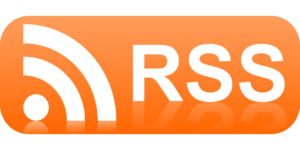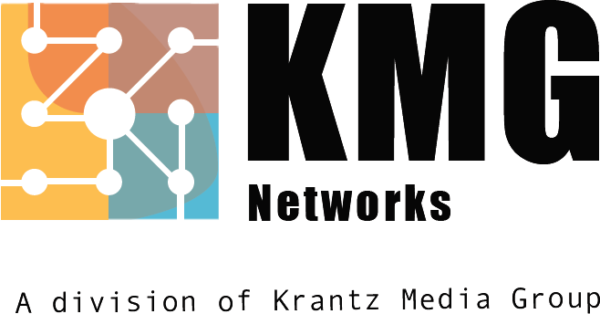If you’ve got a podcast or you’re thinking about starting one, guaranteed you’ve heard whispers of the term RSS feed and you’ve seen the symbol on various web pages or Facebook posts (it looks like the wifi symbol fell over on its side and it’s now radiating the arcs on an angle rather than just up).
 You probably even know that RSS stands for Rich Site Summary (also referred to as Really Simple Syndication) and you may even know that plenty of news sites, weblogs, Twitter feeds, podcasts and online publishers use an RSS feed to syndicate and get their content read or heard.
You probably even know that RSS stands for Rich Site Summary (also referred to as Really Simple Syndication) and you may even know that plenty of news sites, weblogs, Twitter feeds, podcasts and online publishers use an RSS feed to syndicate and get their content read or heard.
But there’s lots more to how an RSS feed works, what it is, why you need it and how to use it to make your podcast a thing of beauty and joy. Not a sound engineer? No problem. Here’s the 411 about RSS feeds written in plain English and drilled down for easy understanding and implementation.
Okay, so first things first – There is a lot of content on the Internet. In fact, that’s an understatement. On YouTube alone, more than 4 million hours of content is uploaded every day, with users watching 5.97 billion hours of YouTube videos each day. And that’s only one website.
 So much content, yet so little time! Sorting, reading and consuming relevant content that matters to you can be terribly daunting considering the breadth and depth of the Internet. This is where RSS feeds come in. Rather than the user going to each individual site to check for updates, the updates and new aggregated content to the user which ultimately saves time and patience.
So much content, yet so little time! Sorting, reading and consuming relevant content that matters to you can be terribly daunting considering the breadth and depth of the Internet. This is where RSS feeds come in. Rather than the user going to each individual site to check for updates, the updates and new aggregated content to the user which ultimately saves time and patience.
It’s like using Netflix where all the movies are there in one place for your perusal compared to walking into a Blockbuster to see if the new releases are there yet. An RSS feed makes content available for the masses so creators can distribute their blog, posts, articles and podcasts to the audiences who want them the most. It’s mandatory for podcast syndication and distribution and becomes the URL for your show.
Specifically for podcasts, it’s extra important that you create a podcast only RSS feed instead of one that has other content. Unlike a radio or TV show, a DVD or magazine (these describe the media and distribution) a podcast is downloadable episodic multimedia (audio, video, and PDF) that gets syndicated through RSS – no one can hear your podcast without the feed.
Having an RSS feed is kind of a big deal (totally, a big deal!) because it contains all of your podcast’s information including the title, image, description, mp3 file URL, and category. Basically, all the nuts and bolts for your podcast to be distributed outside of your hosting platform so you can broaden your audience reach without them needing to visit you on the regular.
For listeners, an RSS feed removes the heavy lifting of creating an email list and sending out push notifications. It couldn’t be easier. Listeners can stay up-to-date with all of their favorite podcasts right at their fingertips in one podcasting app. No searching for new content required, which makes it easy for podcasters to get new listeners without having to put in a lot of time creating email databases and funnels, or putting out newsletters.
Bonus: you can spark more engagement by using the RSS reader to link back to your website. What’s more – and this is the best part – all your content can live and breathe in one place (the hosting site) while the RSS feed disseminates your show for you – that’s what it’s there for!
 Now for the hosting site. Self-hosting is always an option, but if you’re not down to code and aren’t in tune with exactly what’s happening in the industry, a hosting service might be better suited to your needs. Check out Spanish Mustang Radio, an audio journal hosted on TalkShoe’s hosting service (no special tech skills needed!) that discusses everything about and everything to do with Spanish Mustang Horses. Listeners get to hear guest speakers that are breeders, traders, owners, and preservationists who are passionate about the breed discuss stories and personal histories.
Now for the hosting site. Self-hosting is always an option, but if you’re not down to code and aren’t in tune with exactly what’s happening in the industry, a hosting service might be better suited to your needs. Check out Spanish Mustang Radio, an audio journal hosted on TalkShoe’s hosting service (no special tech skills needed!) that discusses everything about and everything to do with Spanish Mustang Horses. Listeners get to hear guest speakers that are breeders, traders, owners, and preservationists who are passionate about the breed discuss stories and personal histories.
As with any show, specifications and technology shift so a hosting site that’s able to ebb and flow and is designed for end-users, is what will help you get noticed. Your feed is the groundwork for your show to be built upon. Choosing the right hosting service will ensure your podcast grows and your audience multiplies. While you’re responsible for the content, a good hosting service is responsible for packaging your content well.
Take a look at TalkShoe where it’s super easy to produce, stream, record and share via RSS feed. TalkShoe takes the guesswork out because your podcast comes with a built-in feed that connects to iTunes and other sharing sites. With a simple code provided upon sign up, your podcast gets to live across multiple channels and you don’t even need to be a technical genius. It’s really that straight forward.


 You probably even know that RSS stands for Rich Site Summary (also referred to as Really Simple Syndication) and you may even know that plenty of news sites, weblogs, Twitter feeds, podcasts and online publishers use an
You probably even know that RSS stands for Rich Site Summary (also referred to as Really Simple Syndication) and you may even know that plenty of news sites, weblogs, Twitter feeds, podcasts and online publishers use an  So much content, yet so little time! Sorting, reading and consuming relevant content that matters to you can be terribly daunting considering the breadth and depth of the Internet. This is where RSS feeds come in. Rather than the user going to each individual site to check for updates, the updates and new aggregated content to the user which ultimately saves time and patience.
So much content, yet so little time! Sorting, reading and consuming relevant content that matters to you can be terribly daunting considering the breadth and depth of the Internet. This is where RSS feeds come in. Rather than the user going to each individual site to check for updates, the updates and new aggregated content to the user which ultimately saves time and patience. Now for the hosting site. Self-hosting is always an option, but if you’re not down to code and aren’t in tune with exactly what’s happening in the industry, a hosting service might be
Now for the hosting site. Self-hosting is always an option, but if you’re not down to code and aren’t in tune with exactly what’s happening in the industry, a hosting service might be 
